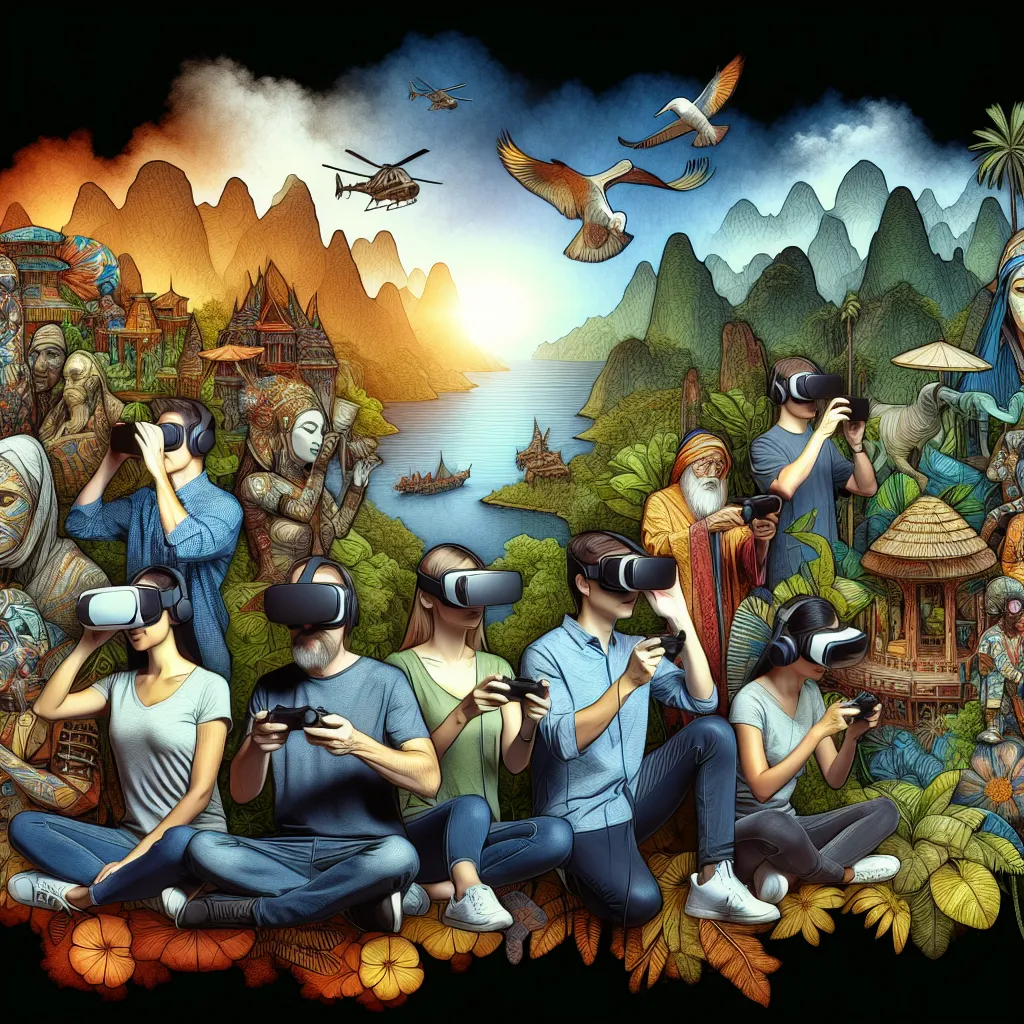The article “Understanding User Behavior: The Key to Maximizing Engagement” emphasizes the importance of delving into user habits, preferences, and needs to tailor content and interactions for a more resonant online experience. By leveraging tools like Google Analytics and user feedback forms, businesses can gain valuable insights and anticipate user needs. Moreover, the article highlights the critical role of interactive design in capturing attention and enhancing user engagement, with a focus on creating memorable experiences and intuitive navigation. Furthermore, the importance of measuring success through metrics like website traffic, click-through rates, and social media interactions is underscored, providing valuable insights into the impact of online content and user experience. Overall, the article presents a comprehensive guide to creating engaging online experiences through understanding user behavior, interactive design, and measuring success.
The impact of user interface design on virtual navigation is crucial in shaping the online experience for users. An intuitive and well-crafted user interface can significantly enhance navigation, making it seamless and enjoyable, while also influencing user engagement and satisfaction. With the increasing prevalence of online experiences, businesses and developers must prioritize user-friendly interfaces to ensure greater user satisfaction and engagement. In parallel, creating immersive online environments is paramount for capturing and retaining user attention. Strategies such as incorporating interactive elements, utilizing personalization, and implementing gamified features, play a central role in crafting these environments, bringing users into a dynamic and engaging virtual world. The thoughtful design of user interface and the strategic implementation of immersive strategies are key in empowering users to explore and interact within online environments effortlessly.
The article “Understanding Online Security: Essential Tips for Beginners” is a comprehensive guide that emphasizes the significance of online security, providing essential tips for novices to protect themselves from cyber threats. It highlights the importance of creating strong, unique passwords, being cautious of phishing attempts, enabling two-factor authentication, and keeping software and antivirus programs up to date. Additionally, the article emphasizes the need for caution when using public Wi-Fi networks and provides practical advice for beginners to navigate the digital landscape securely. With its emphasis on foundational online security practices, the article serves as a valuable resource for individuals seeking to safeguard their online experiences.
The article “Measuring Audience Engagement: The Key Metrics You Need to Know” emphasizes the significance of tracking key metrics to comprehend and enhance audience engagement during online events. It highlights the importance of unique attendees, duration of attendance, audience interaction, and post-event feedback in providing comprehensive insights. By understanding these metrics, event organizers can make informed decisions to improve future events and elevate audience engagement. The evolution of virtual events is also discussed, showcasing how they have expanded global reach and redefined audience engagement in the digital age. Furthermore, the article underscores the necessity for businesses and organizations to optimize strategies for maximizing audience engagement on online platforms. Overall, the article provides valuable insights into understanding and enhancing audience engagement in the evolving landscape of virtual events.
The article “Embracing the Evolution of Virtual Learning: Innovations and Challenges” discusses the growing innovations in virtual learning, such as virtual reality (VR) and augmented reality (AR) technologies, as well as artificial intelligence (AI) powered learning systems. It highlights the opportunities they bring, yet also addresses the challenges of access, affordability, and ethical use. The piece emphasizes the need for educators and institutions to invest in infrastructure and develop guidelines to ensure inclusive and engaging virtual learning experiences. Moreover, the companion article “Enhancing Engagement in Virtual Learning: Strategies and Tools for Success” delves into effective strategies like interactive content, collaborative tools, and personalized learning approaches to elevate engagement in virtual learning environments. By striking a balance between leveraging innovations and addressing challenges, the articles aim to provide insights for creating more engaging and effective virtual learning experiences.
The article explores the future of travel in the digital age, focusing on the rise of virtual exploration. It highlights the transformative impact of virtual reality (VR) and augmented reality (AR) technologies on how people experience and engage with new destinations. The author emphasizes the immersive and interactive nature of virtual travel experiences, which not only provide an alternative for traditional physical travel but also cater to diverse interests and preferences. Furthermore, the article discusses the remarkable shift towards augmented travel experiences, showcasing how AR technology enables users to navigate virtual landscapes, interact with lifelike environments, and engage with historical and cultural elements. Overall, the article presents a compelling insight into how virtual exploration is reshaping the travel industry and inviting readers to delve into the boundless opportunities it offers.
The article “Navigating Virtual Realities: Exploring the Virtual Experience Landscape” delves into the rapidly evolving digital landscape of virtual experiences, showcasing the diverse options available for users, from VR gaming to immersive educational experiences. It emphasizes the importance of understanding the vast range of experiences offered by VR technology, including simulated environments replicating real-world scenarios, historical settings, and fictional realms. Additionally, the article highlights the social aspects of virtual experiences, enabling users to connect, attend events, and collaborate in shared virtual spaces. Moreover, it underscores the business opportunities arising from virtual reality, such as virtual tours and interactive product experiences, transforming marketing and consumer engagement. Overall, the article portrays navigating virtual realities as an exciting and ever-expanding journey, promising limitless potential for innovative and captivating virtual experiences. This comprehensive overview encourages readers to explore the full article to gain insights into the multifaceted world of virtual experiences and their impact on user navigation.
The article “Building Lasting Connections: Designing Intuitive User Experiences” emphasizes the importance of crafting intuitive user experiences to build lasting connections with digital audiences. By understanding user needs and behaviors and employing user-centric design principles, designers can create visually appealing and easy-to-navigate interfaces. Personalization and meaningful interaction further enhance the user experience, fostering a deeper connection with the platform. Similarly, “Personalization and Engagement: Tailoring Online Interactions for Maximum Enjoyment” underlines the significance of tailoring online interactions to user preferences through personalized content and interactive elements, thus enhancing user engagement and enjoyment. Lastly, “Navigating Complexity: Creating Seamless Digital Experiences” delves into the importance of understanding user behavior and intuitive design in creating seamless digital experiences. These articles collectively advocate for prioritizing intuitive design and personalization to maximize user enjoyment and create lasting connections. Readers will gain valuable insights on designing digital experiences that resonate with users’ interests and preferences, ultimately fostering strong and meaningful connections.
The article “Maximizing Engagement: Strategies for Navigating Virtual Events” delves into the essential techniques for creating impactful virtual experiences. It emphasizes the significance of active participation and engagement in virtual conferences, webinars, and workshops and provides strategies to achieve this. The outlined approaches include incorporating interactive tools, delivering compelling content, facilitating networking opportunities, engaging presenters, and sustaining post-event engagement. By implementing these strategies, event organizers and hosts can effectively navigate virtual events, ultimately maximizing participant engagement and creating memorable experiences. The article also highlights the importance of effectively networking in a virtual environment, offering techniques such as leveraging social media platforms, participating in virtual events, engaging in video calls, and maintaining a strong online presence. It encourages readers to explore these strategies to enhance their virtual networking experiences and establish genuine connections.
In the current digital age, businesses are undergoing a significant transformation as they embrace digital technologies and adapt to the online realm, revolutionizing their experiences to meet the ever-changing needs and demands of consumers. This shift involves leveraging digital platforms for marketing and sales, gathering valuable insights through analytics, and integrating seamless online experiences to provide a consistent and personalized touch for their customers. The evolution of customer experiences in the digital age has led to a paradigm shift in how businesses engage with their customers, emphasizing hyper-customization, rethinking the customer journey, and prioritizing transparency and authenticity in online interactions. As businesses adapt to the online realm, embracing digital transformation is essential for driving growth, enhancing customer relationships, and staying competitive in today’s fast-paced digital landscape. The article offers an in-depth exploration of how businesses are navigating this transformation, making it a compelling read for those seeking insights into thriving in the evolving digital economy.
The article “The Evolution of Virtual Tours: A Digital Exploration” provides an insightful overview of the transformative impact of virtual tours on online exploration. It highlights the shift from static images to immersive and interactive experiences made possible through advanced technology like 360-degree cameras and virtual reality. The accessibility and convenience of virtual tours democratize access to cultural and historical sites, opening up new possibilities for individuals who may not have the means or ability to travel. Moreover, businesses across various industries are leveraging virtual tours to showcase their offerings to a wider audience. The article underscores the promising future of virtual tours in enhancing the way we explore and interact with the world, as technology continues to advance in meeting the growing demand for immersive online experiences. If you’re interested in learning more about how virtual tours are shaping digital exploration, this article is a must-read.
The article “Enhancing User Experience: Strategies for Navigating and Enjoying Online Interactions” provides valuable insights into improving online experiences. By prioritizing UI/UX design, personalizing content, and ensuring seamless navigation, users can enhance their online interactions, maximizing enjoyment and engagement. The article emphasizes the importance of creating high-quality, relevant content and fostering community interaction to boost engagement and create a loyal following. Additionally, incorporating multimedia elements and maintaining a user-friendly interface are highlighted as essential strategies for maximizing enjoyment and engagement online. Whether you’re a content creator, business owner, or an online enthusiast, implementing these strategies can greatly enhance your online experiences and interactions.












